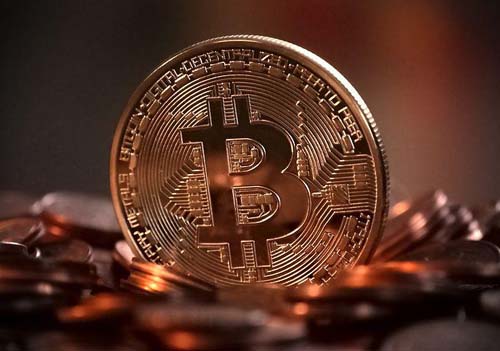Crypto is going to crash and could take your savings with it.
In June 2022, Bitcoin dropped over 30 percent to its lowest values since December 2020, and Ethereum, the second-most valuable cryptocurrency, fell about 35 percent. TerraUSD, a so-called “stablecoin,” also collapsed when its underlying cryptocurrency LUNA lost 97 percent of its value in just 24 hours, apparently destroying some investors’ life savings. The implosion helped trigger a crypto meltdown that erased $300 billion in value across the market.
As cryptocurrency prices plummeted, Celsius Network—an experimental cryptocurrency lender—announced it was freezing withdrawals “due to extreme market conditions.”
These crypto crashes and freezes have fueled worries that the complex crypto banking and lending system is on the brink of ruin.
But this crash shouldn’t surprise anyone familiar with the industry—or anyone who remembers the financial crashes of 1929 and 2008.
Let me explain.
In the murky world of crypto decentralized finance, known as DeFi, it’s hard to understand who provides money for loans, where the money flows, or how easy it is to trigger currency meltdowns.
There are no standards for issues of custody, risk management, or capital reserves. There are no transparency requirements. Investors often don’t know how their money is being handled. Deposits are not insured.
It’s a Ponzi scheme. Like all Ponzi schemes, getting rich depends on how many other investors follow you into it—until somebody’s left holding the worthless crypto coin.
Why isn’t this market regulated? Follow the money.
The crypto industry is pouring huge amounts into political campaigns. It has hired scores of former government officials and regulators to lobby on its behalf—including three former chairs of the Securities and Exchange Commission, three former chairs of the Commodity Futures Trading Commission, three former U.S. senators, and even former Treasury Secretary Larry Summers.
In the past, cryptocurrencies kept rising by attracting new investors and big Wall Street money, along with celebrity endorsements. But all Ponzi schemes topple eventually—just like the Wild West finances of the 1920s did.
Back then, Americans had been getting rich by speculating on shares of stock, as other investors followed them into these risky assets—pushing their values ever upwards. When the toppling occurred in 1929, it plunged the nation and the world into the Great Depression.
That crash resulted in the Glass-Steagall Act, signed into law by Franklin D. Roosevelt in 1933. Glass-Steagall separated commercial banking from investment banking, putting an end to the giant Ponzi scheme that had overtaken the American economy and led to the Great Crash of 1929.
It took a full generation to forget that crash and allow the forces that caused it to repeat their havoc.
By the mid-1980s, as the stock market soared, speculators noticed they could make even more money if they gambled with other people’s money, as speculators did in the 1920s. They pushed Congress to deregulate Wall Street, arguing that the United States financial sector would otherwise lose its competitive standing internationally.
The final blow was in 1999, when the Clinton administration succumbed to intensive lobbying and ditched what remained of Glass-Steagall. With its repeal, American finance once again became a betting parlor.
Inevitably, Wall Street suffered another near-death experience when its Ponzi schemes began toppling in 2008, just as they had in 1929. While the U.S. government bailed out the biggest banks and financial institutions, millions of Americans lost their jobs, their savings, and their homes—but only a single banking executive went to jail. In the wake of the 2008 financial crisis, a new but watered-down version of Glass-Steagall was enacted—the Dodd-Frank Act.
Which brings us—nearly a century after Glass-Steagall—to today’s crypto crash.
If we should have learned anything from the crashes of 1929 and 2008, it’s that regulation of financial markets is essential. Otherwise they turn into Ponzi schemes—leaving small investors with nothing and endangering the entire economy.
It’s time for the Biden administration and Congress to end the crypto Ponzi scheme.
In the meantime, share this video so your friends and family don’t fall for it.
This post originally appeared at RobertReich.org.
Robert B. Reich is the chancellor’s professor of public policy at the University of California, Berkeley and former secretary of labor under the Clinton administration. Time Magazine named him one of the 10 most effective Cabinet secretaries of the 20th century. He is also a founding editor of The American Prospect magazine and chairman of Common Cause. His film, Inequality for All, was released in 2013. Follow him on Twitter: @RBReich.



